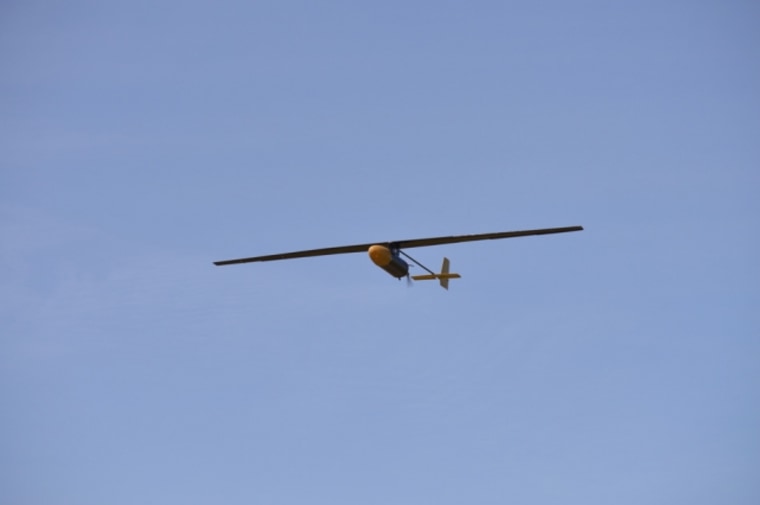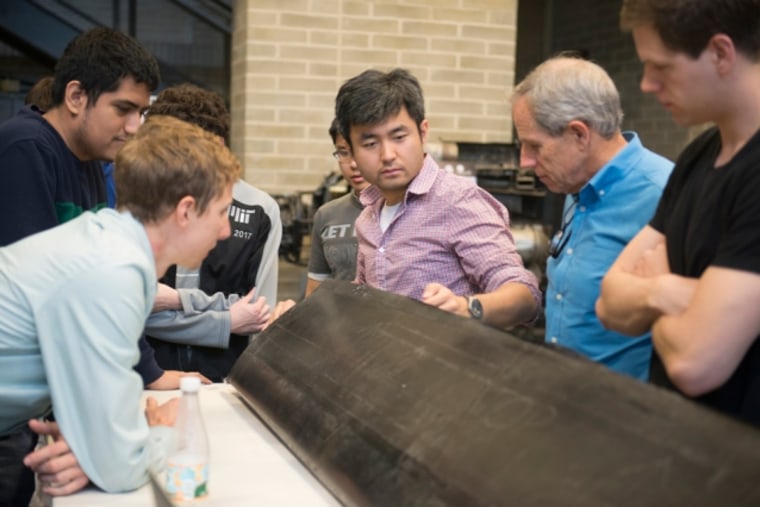When disaster strikes, a good telecommunications system can be key to restoring services and getting help to victims. But often the same earthquake, flood, or other catastrophic event that causes the devastation also takes down telephone lines and other key parts of the telecommunications infrastructure. Even if the lines stay intact, communications circuits may be overloaded when victims and their loved ones try to contact each other.
But students at MIT may have a partial solution for the problem. As part of a class project, they’ve created an autonomous aircraft that could quickly be directed over disaster zones to serve as an airborne telecommunications and surveillance hub.
Stringent FAA regulations have limited the students' ability to flight-test the drone, but calculations suggest that it offers key advantages over existing commercial drones—notably the ability to stay aloft, and thus offer uninterrupted help, for very long periods of time.
“We’re opening a new part of the design space—an aircraft with a five-day endurance that is sized to carry a 10-pound payload at 15,000 feet,” Dr. Warren Hoburg, professor of aeronautics and astronautics at MIT and one of the team’s leaders, told NBC News MACH in an email. “This has never been done before.”
Related: One of These Drones Just Might Save Your Life
Ten pounds might not seem like much, but the students say it’s enough to carry communications gear capable of relaying radio and internet transmissions to and from a disaster zone. It could also accommodate a camera that could monitor activity on the ground and help coordinate delivery of emergency services.
With a wingspan of 24 feet and a weight of just under 150 pounds, the drone prototype is smaller than existing drones being used for similar purposes. But it far surpasses the current record holder for time aloft, Aurora Flight Sciences’Orion military surveillance aircraft. It weighs 5,170 pounds (10,170 pounds with fuel), has a 160-foot wingspan, and can stay up in the air for a little over 80 hours.
According to calculations, the MIT drone should be able to stay aloft for about 120 hours.
Hoburg attributes the MIT drone’s record-setting ways to its unusually long, slender wings. But other experts say the wings could prove to be a liability in certain circumstances.

“If you’re trying to design an airplane whose entire purpose is to stay up for an entire weekend and the weather gets bad, you just can’t fly them through that,” said Tom Irvine, a former deputy associate administrator of NASA’s Aeronautics Research Mission.
He said the wings would make the drone difficult to control in windy conditions.
Still, Irvine commended the students’ work. “Everything they’re looking at—the lightweight materials, the designs, and mathematics—those are the types of things that are a really positive step in the right direction,” he said.
Related: These Giant Drones Could Seriously Disrupt the Shipping Industry
The students plan to conduct more extensive flight tests of the drone this summer. While it’s not yet certain whether they will eventually bring this drone to market, the world will almost certainly see more drones like this one.
As Dr. R. John Hansman, professor of aeronautics and astronautics at MIT and one of the team’s leaders, said in a written statement, “I think it’s pretty clear that someone within a few years will manufacture a vehicle that will be a knockoff of this.”
